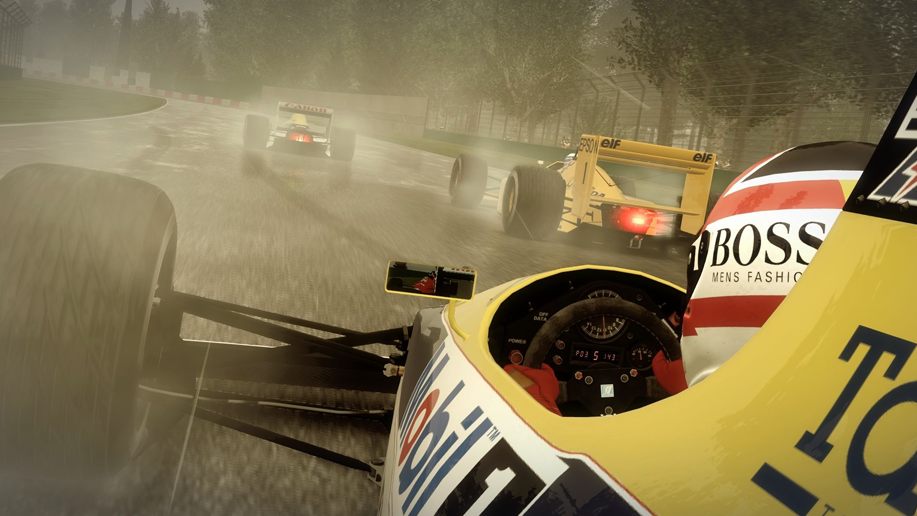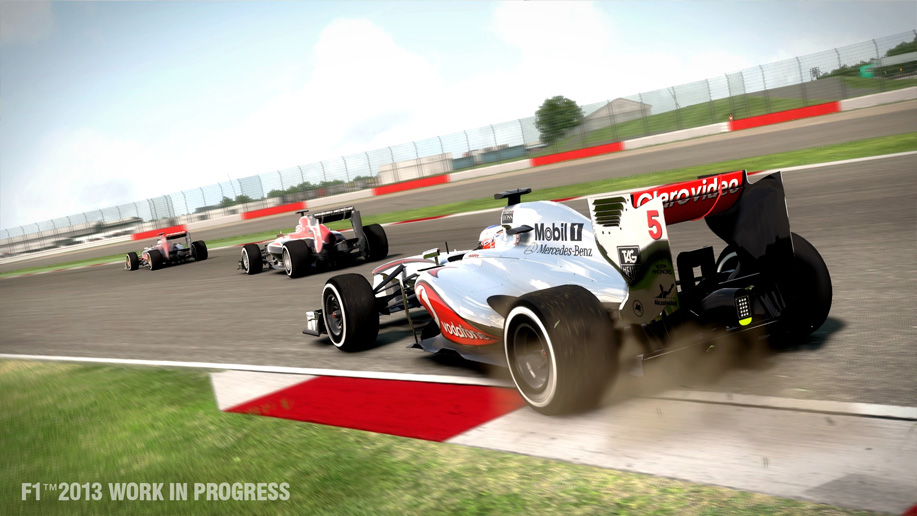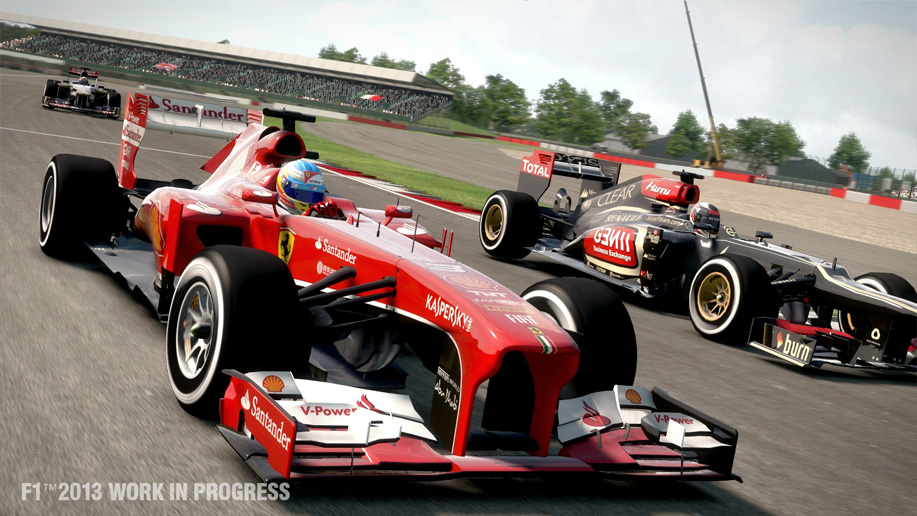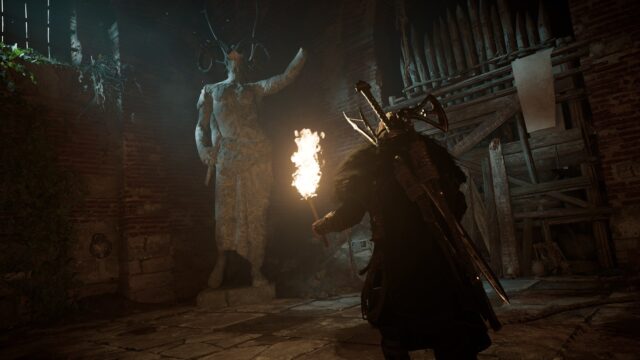F1 2013 Review

The modern Formula 1 car has more similarities to a spaceship than to a hatchback parked near your house. The engine, with its artificially limited revs to 18,000 rpm, the electric drive button that adds 80 horsepower with a press, and the downforce, which, according to legends, is enough to drive on the ceiling – all of this makes the concept of “car” infinitely stretchable.
The 80s lineup of cars presented in F1 2013 also looks extraordinary with their thick and smooth tires and monstrous turbochargers. The difference is that there is still a subtle but noticeable connection between their mechanics and traditional cars. Hamilton and his colleagues are forced to master their cars with surgical precision, as these machines crave speed and sharp turns – something you can experience perfectly with a controller.
The introduction of vintage technology into the game is not only a pleasant bonus but also a necessity. The annual Formula 1 games faithfully follow the sporting canons, and the current season has brought virtual stasis. For the first time since Codemasters acquired the license, no new tracks have been added to the calendar, and all the cars are practically identical. If F1 2013 simply depicted the new season as it is, it would be too cynical of an update.

Compared to the fierce representatives of the retro era, modern racing cars seem quiet and serene.
But with the classic F1 2013 mode, it already becomes unique enough to attract attention. The situation is slightly complicated by the release of two different versions of the game – the regular one, with cars from the 80s and two old tracks, and the Classic Edition, which costs £10 more and includes six cars from the 90s and two additional tracks. Those who didn’t plan on extra expenses will be able to later upgrade the regular version with DLC.
Driving cars from a different era – undoubtedly the main feature of the game this year. Driving them is more difficult, but it only emphasizes their striking difference from the 2013 models and appeals more to your instincts. You will have to tame the rough, unadulterated power either by delicately using the right stick or through generous countersteering. The wild fury of the early models, when they scrape against curbs and teeter on the edge of grip, is simply mesmerizing.
Furthermore, the cars from each season differ from each other like night and day, starting from the thundering metallic monster of Alan Jones, on which he won the world championship in 1980, to the controllable rocket of Nigel Mansell – a car for which it would already be worth splurging on the Classic Edition. Special attention should be given to the Lotus and Ferrari of 1988, which unleash almost all of their power in one thrilling surge at 11,000 RPM.

In rare moments of deviating from widespread licensing, you can drive on old tracks with modern models.
Aesthetically, the game plays magnificently on your hazy memories from that era. In classic mode, you can set a color filter that adds a pale yellowish tint, evoking memories of summer days when you smoked half a pack of Gauloises Blondes between the second and third free practice sessions, admiring your fancy flat-screen television. For the 90s, there is a cool bluish shade that refers to the advancement of broadcasting technologies – and the slow demise of the romance of motorsport, heralded by Michael Schumacher.
The problem is that despite all the pleasure of driving, licensing constraints prevented the new mode from being more immersive. Only three teams are featured (Ferrari, Lotus, and Williams), which results in fewer drivers in cars from different seasons and the inability to start a championship. 1988 is the only season where all three teams compete on equal cars, but it is disheartening that McLaren, which dominated that year, is absent. Even with DLC and multiplayer, the classic mode looks more like an original novelty than a true alternative to the normal game.
If you want, you can simply ignore it, but then you will be left with a game that is painfully familiar from the previous season. All the innovations are insignificant, and the most significant of them is the ability to save in the middle of a race, for those who do not want to spend an entire evening on it. The graphics have been slightly improved – probably due to the reduced number of players in races – now more attention is paid to close-ups. The result is a clear and vibrant game that accompanies the current generation.

In direct comparison to last year’s game, everything looks like a set of minor improvements, but it is easy to overlook how much more complete the game has become in four years of such enhancements. Features such as local weather conditions, a fully cooperative championship, and the ability to supplement the multiplayer grid with computer opponents are still rare in similar games – and at the same time, they are present in the officially licensed game. Not to mention the 21 tracks available for single-player and multiplayer competitions.
The Classic mode is a trial but promising step towards more diverse Formula 1 games – free from the random shortcomings of sports seasons. The evolution of racing technology is already evident in a handful of local cars, and the rich history of F1 allows for the addition of many more icons of sports car manufacturing. And I hope that in the future, Codemasters Birmingham will follow this path.

So, F1 2013. In itself – a magnificent racing game, but in the context of annual iterations, here you can only highlight the pleasantly unexpected, but terribly limited classic mode. Devoted fans of the series may be disappointed that they are asked to pay an additional $12 for a small layer of content from the 90s, especially hardcore fans who will immediately be overwhelmed by painful nostalgia. In turn, this is evidence of a special attitude towards the presented classic models, so the choice of version can turn into a real dilemma.
Share
Discuss
More Reviews





